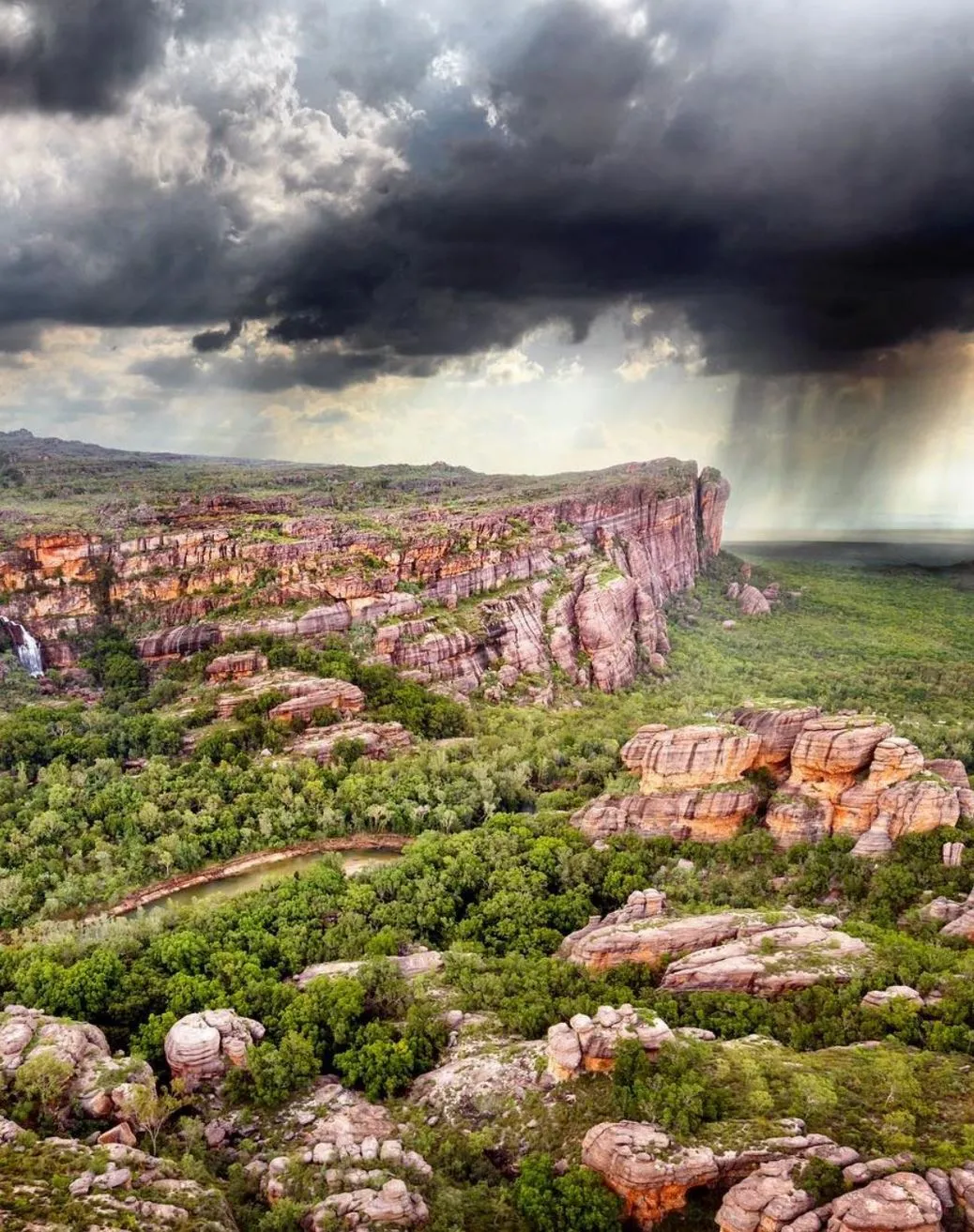Kakadu National Park in the Northern Territory of Australia is not only a UNESCO World Heritage Site but also one of the oldest living landscapes on Earth. The geology of Kakadu is 2.5 billion years old and gives us a window into the Earth’s history. The dramatic landscapes feature sedges, rock overhangs and outlying formations that have stood the test of time. These have been shaped by climate extremes, dry season with no water and wet season with plenty of water.
The park’s ancient landforms include rugged escarpments, wide floodplains and moist gorges that support diverse ecosystems. It’s one of the few places on Earth where you can see the interaction of geological time, biological evolution and cultural tradition.
Contents
Ancient Aboriginal Presence
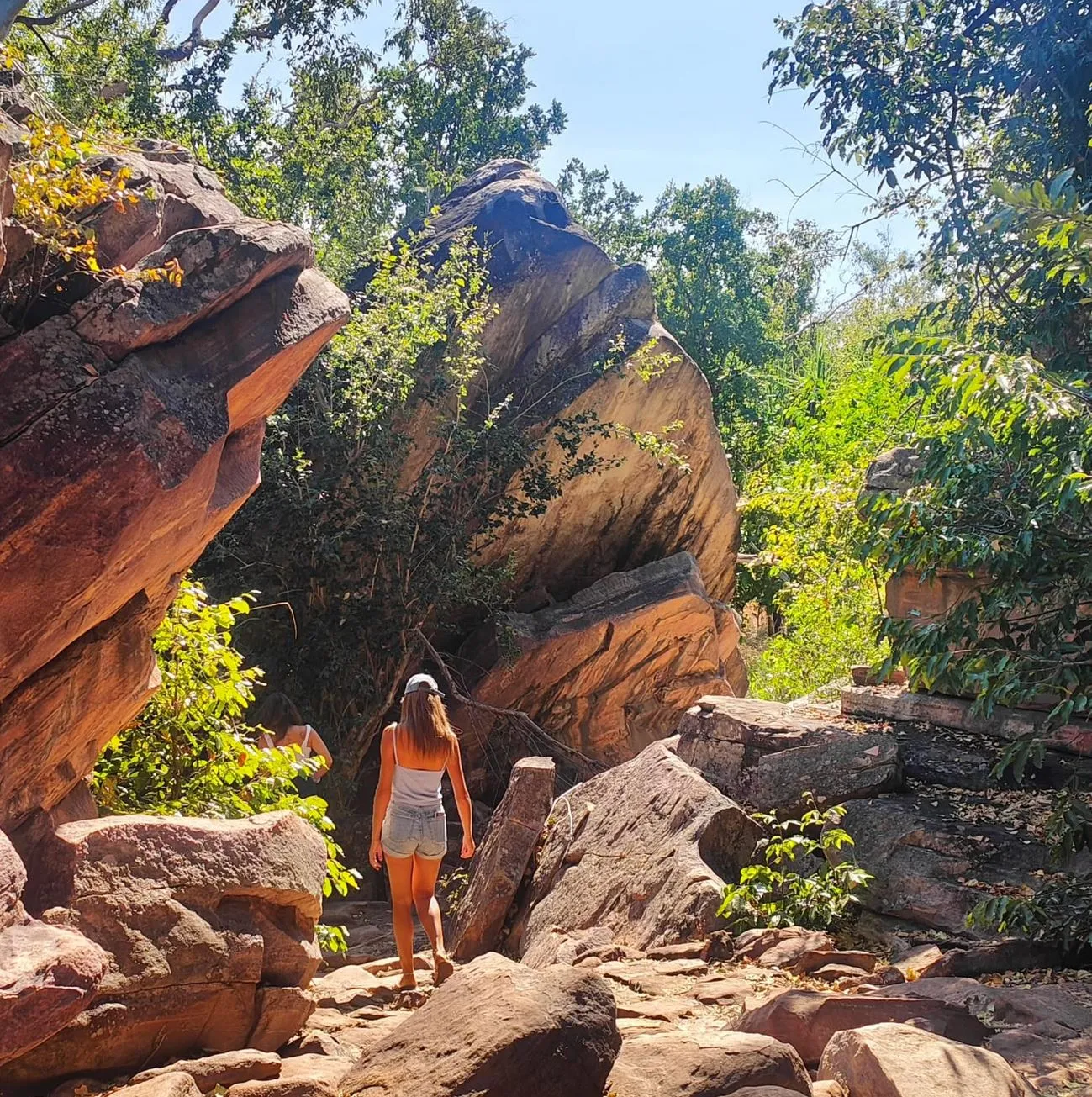
Aboriginal people have lived in the Kakadu region for more than 65,000 years, making it one of the longest continuously occupied areas in the world. They built permanent settlements and lived in harmony with the land. The park has over 5,000 rock art sites – sometimes called “magic paintings” – in caves, rock shelters and beneath towering rock overhangs.
These ancient artworks are more than just visual records; they are historical records passed down through generations. The paintings show hunting scenes, spiritual beliefs and seasonal changes such as the dry to wet season. Through these stories we can see how Aboriginal hunters and gatherers interpreted and responded to the world around them. Many of these sites are still shared today by people connected to their ancestral heritage.
Geological Timeframe
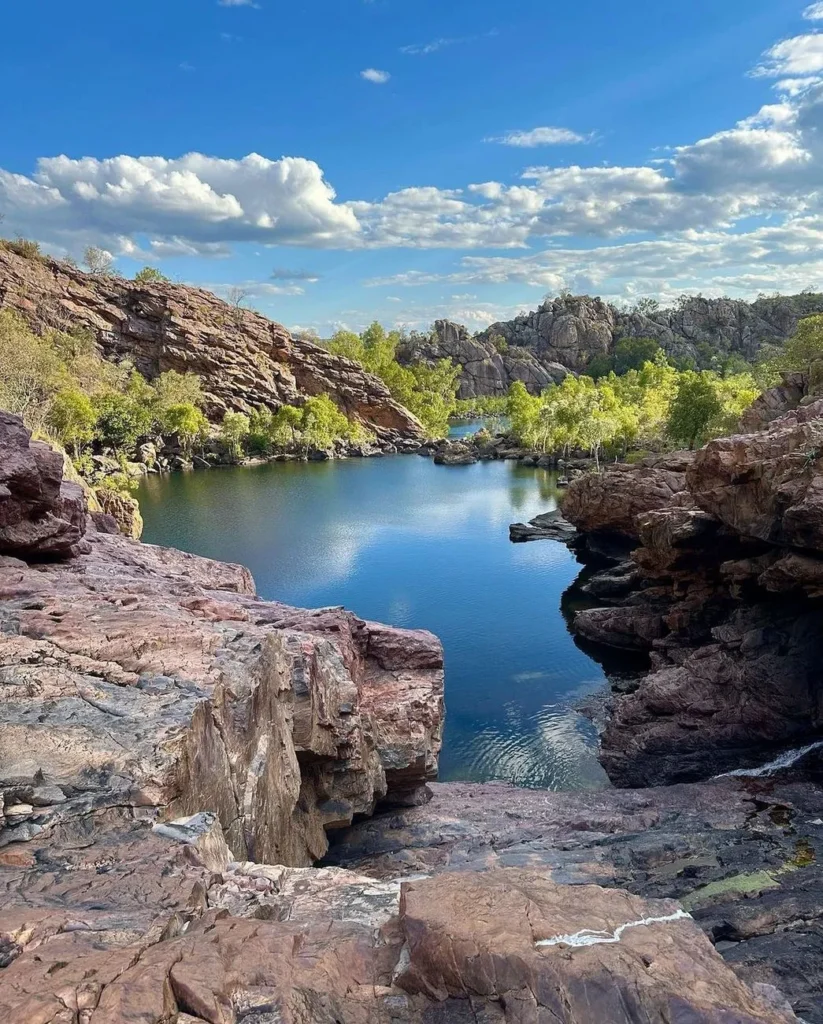
The Arnhem Land Plateau, the backbone of the park, started to rise more than 1.8 billion years ago. What we see as jagged escarpments and big trees in fertile valleys were once underwater. Boats and scenic flights give tourists a glimpse of the vast complex landforms that evolved through tectonic activity, sedimentation and erosion. Outlying formations, sedges and rock-strewn valleys still hold the history of this land. In times of extreme heat, native species adapt to survive. Cold-blooded animals like reptiles bask in shaded rock shelters or near river banks. The temperature extremes have shaped plant and animal adaptation, including prolific plant growth and the behaviour of the northern bullfrog.
Biodiversity Through the Ages
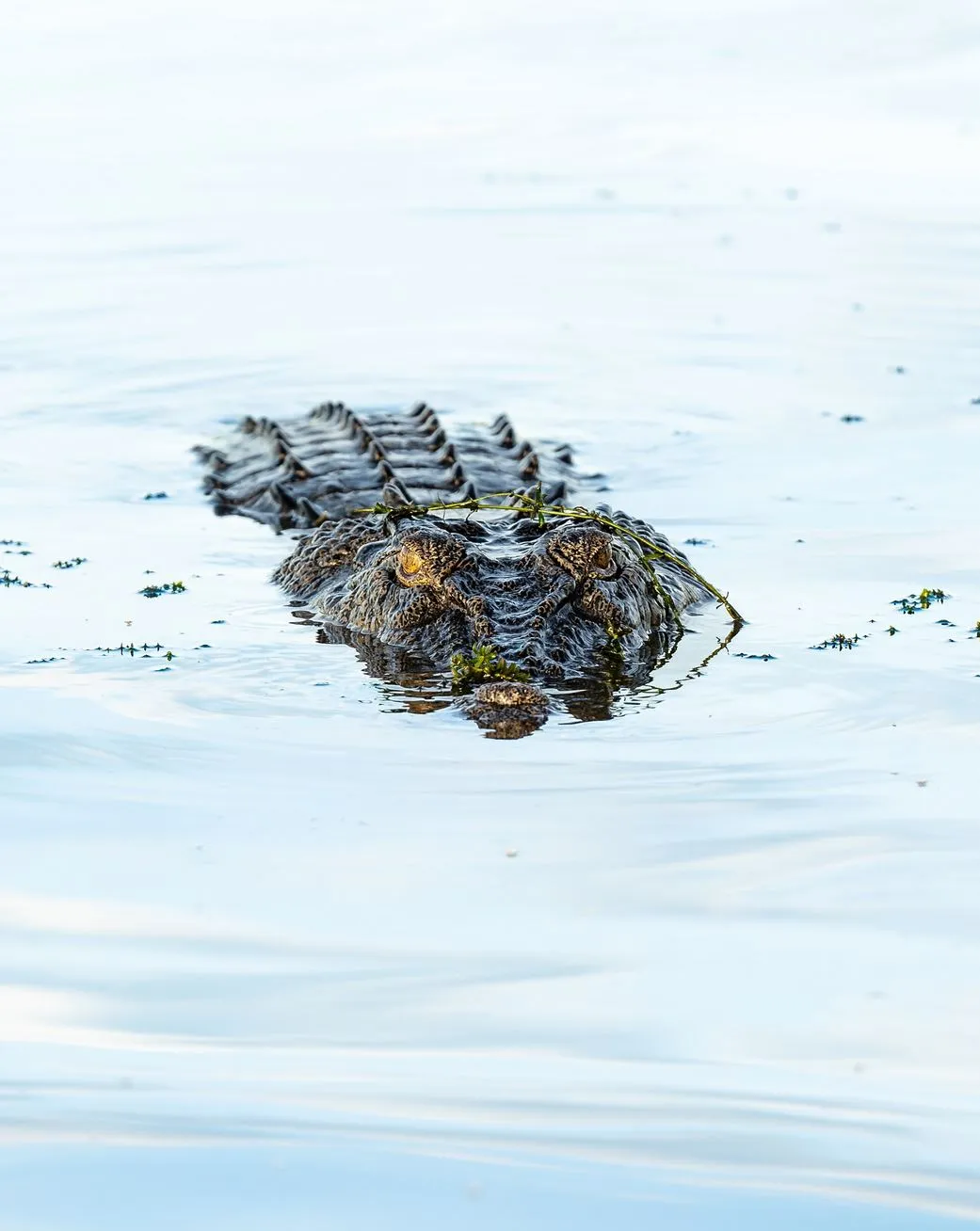
Kakadu is wildlife heaven. Over thousands of years this region has supported an ever-changing ecosystem with an incredible array of flora and fauna. Today it’s home to over 280 bird species, hundreds of plant types, 10,000 insect species and countless microhabitats. Visitors marvel at the hundreds of thousands of waterbirds that congregate during the wet season.
The river systems are teeming with native fish and the reptiles include monitors, snakes and of course the saltwater crocodile. This predator was nearly wiped out by commercial hunting and crocodile shooting campaigns due to fears of attacks. Conservation efforts turned that around but stories of wounded crocodiles from past hunting eras are still told in local legend.
Human Impact and Historical Records
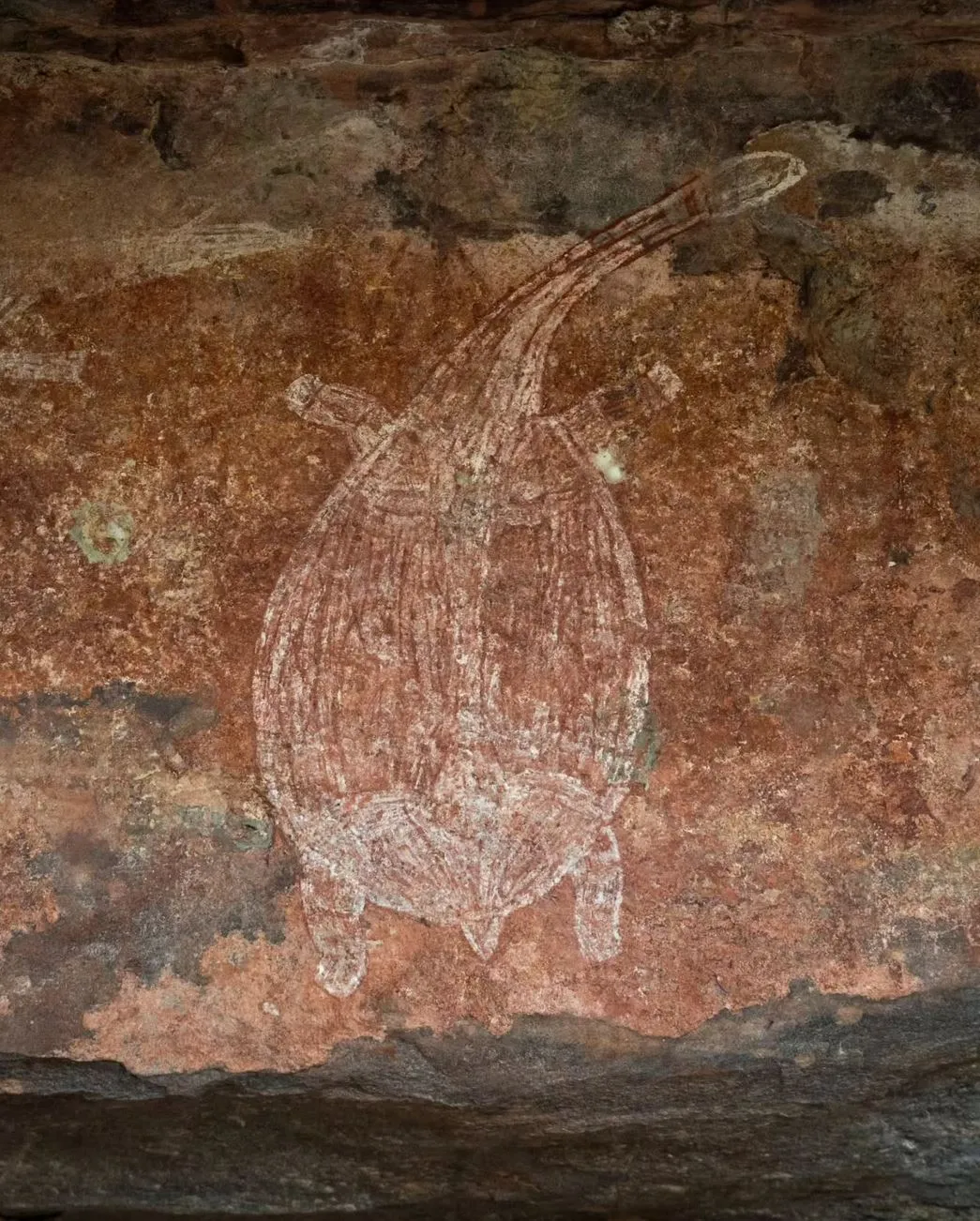
The human footprint on Kakadu is recorded not just in its art but also in its history. Early European settlers set up mining camps, tried dairy farming and explored the pastoral industry. But with dry conditions, limited supplies and the need for external services like a medical clinic many of these efforts were short-lived.
In the mid-20th century tourism started to grow with commercial camping sites and safari camps attracting visitors who wanted to explore one of the oldest and most ecologically rich regions on earth. Sites near campgrounds still show encounters between Aboriginal communities and outsiders, including images of hunting crocodiles and strange items like white snowflake-patterned sailing ships.
Snapshot of Deep History
To get a sense of Kakadu’s long history here’s a quick rundown of its key historical and ecological milestones:
| Feature | Age / Estimate | Description |
|---|---|---|
| Geological Formation | 2.5 billion years | Rock structures are among the oldest on Earth |
| Aboriginal Settlement | 65,000+ years | Continuous human presence and cultural continuity |
| Arnhem Land Plateau Formation | 1.8 billion years | Escarpments and moist gorges shaped by ancient seas |
| Rock Art Sites | Up to 20,000 years old | Depict creation stories, daily life, and environmental adaptation |
| Kakadu National Park was Founded | 1979 | Designated national park status |
| UNESCO World Heritage Status | 1981 | Recognised for both natural and cultural significance |
World Heritage Status
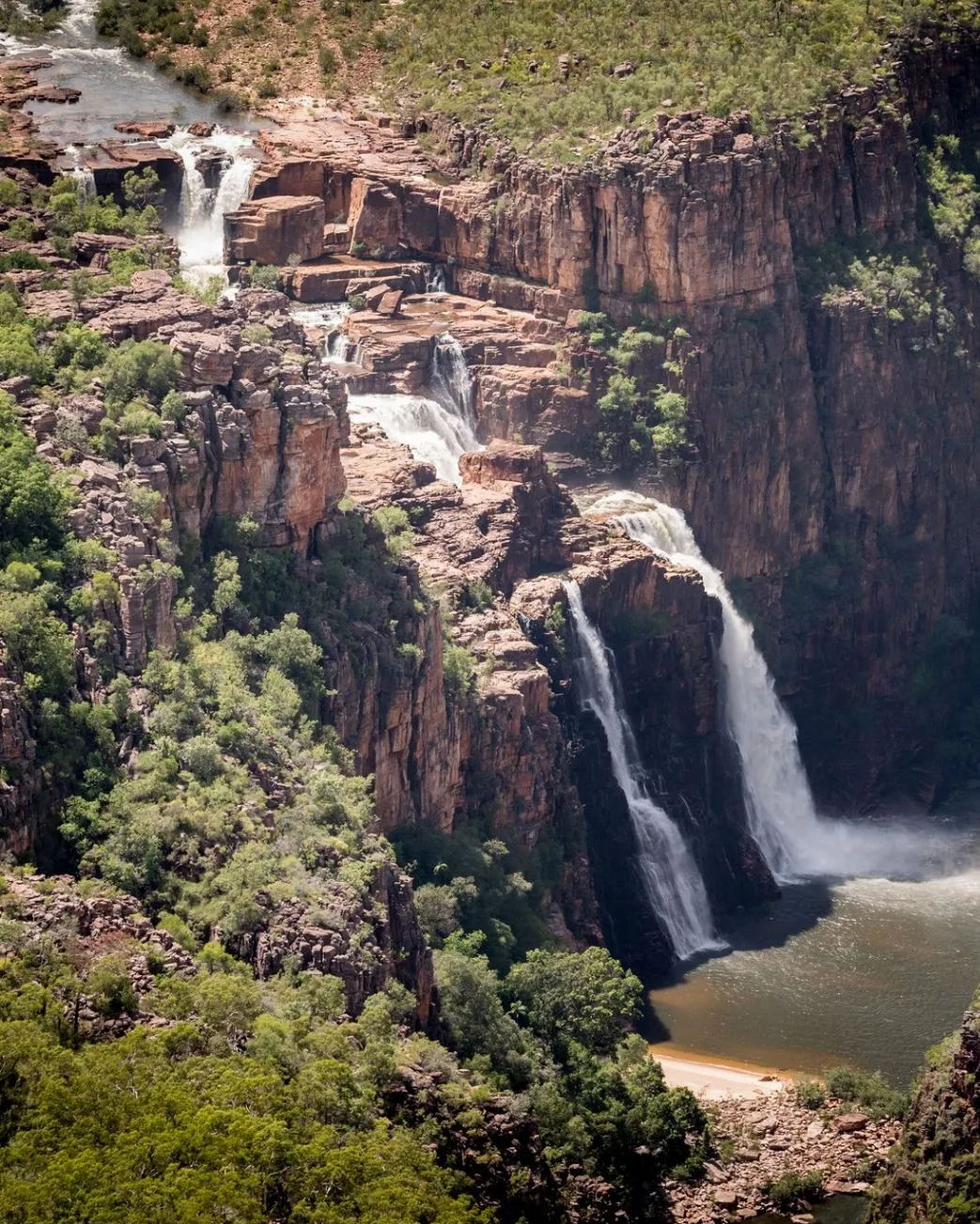
Kakadu was declared a national park in 1979 and by 1981 was listed on the UNESCO World Heritage list for both natural and cultural values. This is rare and highlights the park’s importance as a living ecological archive and cultural continuum.
Today it’s a vital refuge for endemic plants, animals and old knowledge. Interpretive centres and cultural tours help you understand the deep connection between people and land.
Nearby Places to Visit
If you’re visiting Kakadu be sure to visit nearby Litchfield National Park with its waterfalls and termite mounds and Nitmiluk Gorge with its sandstone cliffs and Aboriginal rock art. These areas complement the Kakadu experience and can be added to extended itineraries. For those short on time a Darwin to Kakadu day trip is a great introduction to the park’s highlights from rock art sites to wildlife viewing. Many of our guided tours with Autopia Tours combine these destinations and give you access to exclusive sites and local traditions.
Why Age Matters
Kakadu’s age is extraordinary and that’s what makes it globally significant. It’s a place where geology, biodiversity and culture converge. Understanding its past helps us appreciate its present. Whether you’re watching crocodiles basking on river banks or standing under trees shaded by rock overhangs you’re in a place shaped by time and adaptation.
The contrast between the dry and wet seasons, the survival of species in extreme climates and the ongoing transmission of cultural knowledge make Kakadu a powerful symbol of the Earth’s resilience. It’s not just a destination – it’s a living, breathing archive of life on this planet.
FAQ
How old is Kakadu geologically?
Parts of Kakadu are 2.5 billion years old, one of the oldest on Earth.
How long have Aboriginal people been in Kakadu?
Aboriginal Australians have been in Kakadu for over 65,000 years in permanent settlements and rock shelters.
When was Kakadu National Park created?
The park was created in 1979 and World Heritage listed in 1981.
What’s the significance of Kakadu’s rock art?
Kakadu has over 5,000 Aboriginal rock art sites, in rock overhangs, some over 20,000 years old, of creation stories, daily life and seasonal events like the wet and dry season.
Why is Kakadu a World Heritage site?
For its natural biodiversity (hundreds of thousands of species) and its cultural history tied to one of the oldest living cultures on earth.

